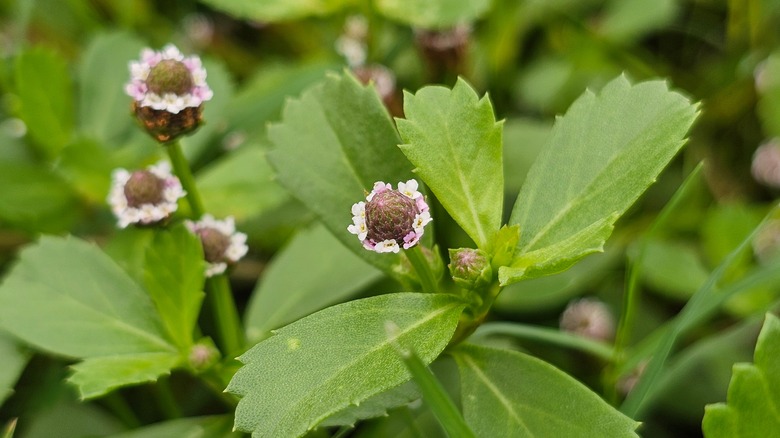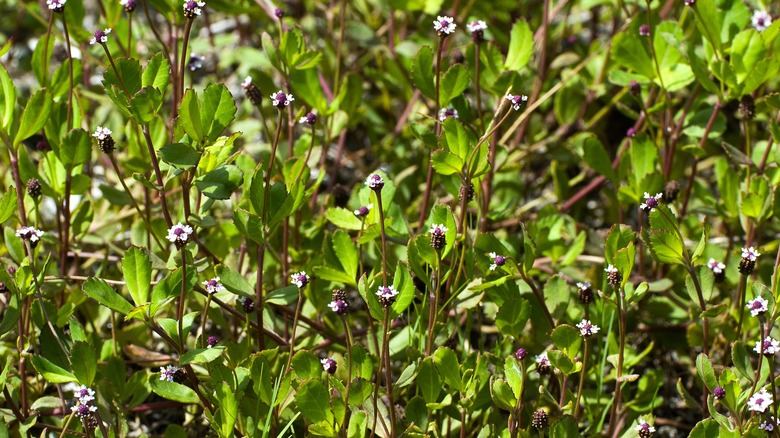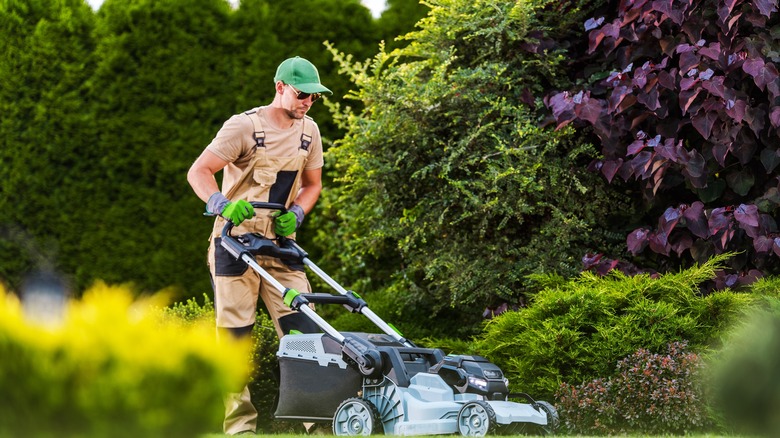Simple Tips For Growing Frogfruit As A Lawn Alternative To Keep Weeds At Bay
In the past, frogfruit (Phyla nodiflora) has often been seen as nothing more than a weed, but this view is quickly changing. Not only can frogfruit be a pollinator-friendly flowering ground cover, but it can even make a good lawn alternative in many locations. Thanks to its tolerance for a variety of growing conditions and its fast growth rate, frogfruit can thrive and outcompete weeds where many other lawn alternatives cannot. As long as you meet your frogfruit's light, temperature, and water needs and avoid walking on it too much, it can make an ideal lawn alternative.
As classic as lawns full of turfgrass can be, they are also high maintenance, requiring regular mowing, watering and fertilizing. This isn't just expensive and time consuming, it's also detrimental to the environment. Considering the serious downsides of turfgrass lawns, it's no wonder low maintenance and pollinator-friendly alternatives like the charming frogfruit have begun attracting attention. In addition to being a North American native, frogfruit is also a host plant for many native butterflies and its adorable flowers are a hit with a variety of pollinators.
How to ensure your frogfruit lawn thrives
Frogfruit is perennial in zones 6 through 11, and unlike many popular types of turfgrass, it does not require full sunlight to grow, instead thriving in anything from full sunlight to part shade. It does tend to flower less in shade though. Frogfruit is also far less picky about its soil than many turfgrasses and other plants, happily thriving in the vast majority of soil types and requiring little added fertilizer. It is even salt-tolerant in moderation, making it a good option for gardeners living in coastal regions.
While frogfruit may sound invincible, it does require some care. Despite generally being drought-tolerant, it may occasionally require water during hot and dry summers and when it is getting established. Also, despite its tolerance for salty breezes, it has a low tolerance to being flooded with salty or brackish water, which could be a problem in some regions.
Using lawn mowers and walking on frogfruit lawns
Frogfruit is not the best option if you, your family, or your pets will be regularly walking or playing in the yard, as frogfruit can only tolerate light foot traffic. This is unfortunately a common problem with many eco-friendly grass alternatives. For high traffic areas, mulch can be a durable and low maintenance way to take part in the anti-lawn movement.
While frogfruit only grows to about 3 inches in height, with flowers that grow up to 6 inches, you can occasionally mow it if you like. The University of Florida Extension states that frogfruit lawns can be mowed to the same height as turfgrass lawns. You may want to avoid mowing too often though, as frogfruit's flowers add charm and whimsy and benefit pollinators. The plant even acts as host for many native butterflies, including the common buckeye and the white peacock.


